Tablet press machine is an essential production equipment for pharmaceutical companies, health care product companies, chemical industry and other companies. It is mainly used to press powder or granular materials into single-layer or multi-layer tablets with uniform size, shape and weight through different process machines or different stamping dies.This article provides a detailed overview of tablet press machines, including their history, types, working principles, components, and applications.
The tablet making process involves several critical steps to ensure high-quality production. Initially, active pharmaceutical ingredients (APIs) and excipients are accurately weighed and mixed. This mixture undergoes granulation to improve flowability and compressibility, by drying if wet granulation is used. The granules are then sized for uniformity and blended with additional excipients like lubricants and disintegrants. The core step is compression, where the blended granules are fed into a tablet press machine and compressed into tablets under controlled force to ensure uniform density and hardness. Finally, tablets may be coated for improved appearance, taste, and stability before being packaged to protect them from environmental factors and ensure shelf life.
The history of tablet press machines dates back to the 19th century. The evolution of tablet presses is driven by the pharmaceutical industry's need for tablet production efficiency, tablet size consistency and quality stability, which continuously improves and innovates technology.
1. Early Beginnings: The concept of tablet compression began in the 1800s. The first manual tablet press machine was a simple device that used a single punch to compress powder into tablets. These early machines were labor-intensive and had limited production capacity.

2. Introduction of Rotary Tablet Press: In 1872, an American pharmaceutical company, developed one of the first rotary tablet press machines. This innovation marked a significant advancement in tablet manufacturing. The rotary tablet press allowed for continuous production, significantly increasing the output and efficiency of tablet production.
3. 20th Century Advancements: The 20th century saw numerous advancements in tablet press technology. The introduction of electric motors and automation further enhanced the efficiency and precision of tablet presses. During this period, various types of tablet presses, including single-punch and multi-station rotary presses, were developed to meet the growing demands of the pharmaceutical industry.
4. Modern Era: With the development of science and technology in the modern era, High Speed Tablet press technology has also undergone revolutionary changes. They have evolved from simple mechanical structures to now equipped with advanced digital functions, such as computer-controlled digital display of the production process, automatic feeding systems, and real-time pressure production status monitoring. These technological advances have enabled tablet manufacturers to further improve their production efficiency, meet the rapidly growing market demand, and maintain the quality of produced tablets.
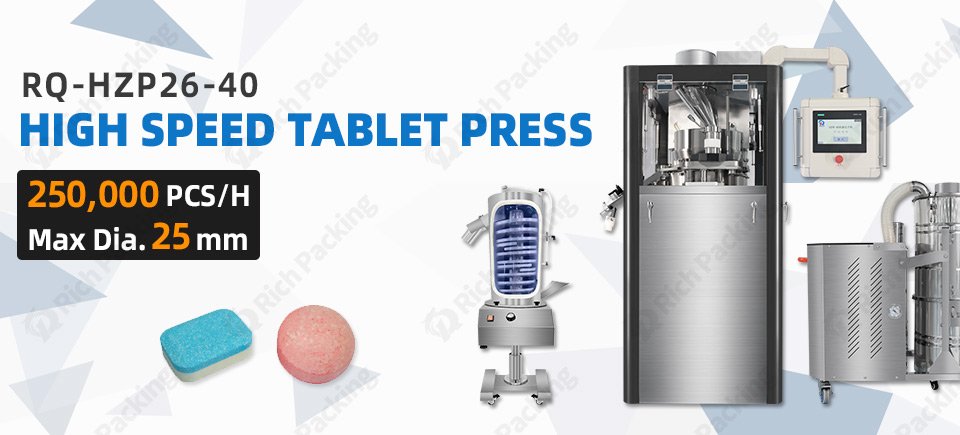
According to different application requirements and production scales, tablet presses are mainly divided into the following types:
1. Single-punch tablet press: Single-punch tablet presses use one punch and one die for tableting. The punch moves between the upper and lower dies to press powder or granules into tablets.
2. Rotary tablet press: The rotary tablet press consists of a rotating turntable and multiple punches. When the turntable rotates, the punches enter the tableting area in turn to press powder or granules into tablets.
3. High-speed tablet press: The high-speed tablet press is an upgraded version of the rotary tablet press, designed for ultra-high-volume industrial production. Its advanced control system can monitor and adjust tableting parameters in real time to ensure the quality and consistency of each tablet.
4. Multilayer tablet press: A multilayer tablet press is able to compress multiple layers in the same tablet, each layer can contain different active ingredients or excipients. This equipment is suitable for the production of functional tablets that require a multilayer structure, such as sustained-release tablets, controlled-release tablets, etc.
5. Special-purpose tablet press: A special-purpose tablet press is a device designed to meet specific production needs, usually with unique functional modules and designs. For example, a tablet press for the production of effervescent tablets needs to be equipped with a moisture-proof system, while a tablet press for the production of special-shaped tablets requires a customized mold.
Tablet press machines convert powder or granular materials into solid tablets through a series of well-coordinated steps. Here is a detailed bre akdown of the process:
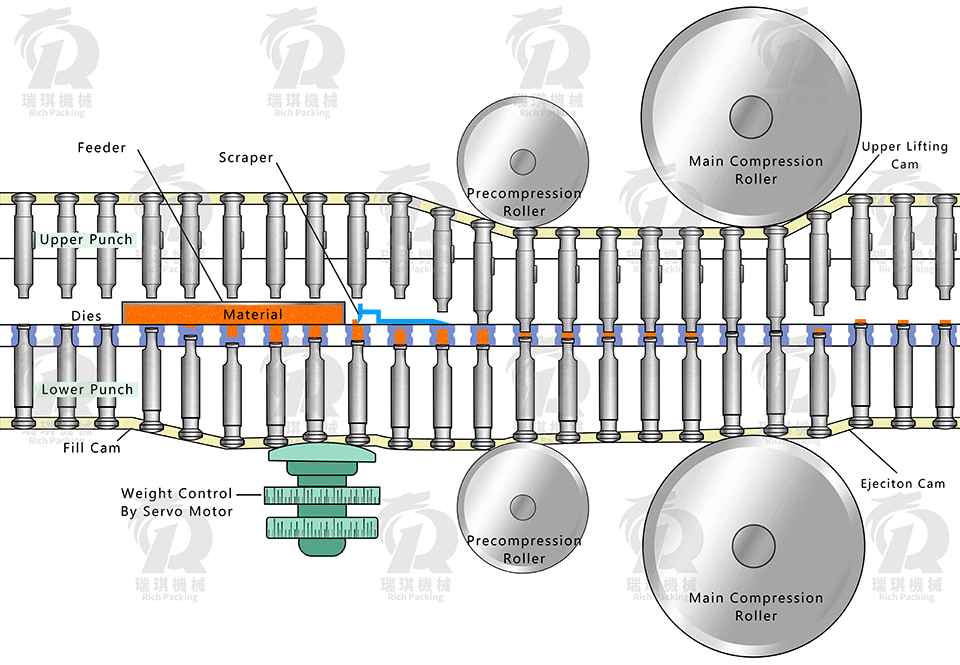
1. Feeding of Raw Materials
The process starts by delivering raw materials into the die cavity of the machine. This task is usually handled by a feeder mechanism designed to maintain a consistent and even flow of material. For materials with high stickiness, a forced feeder may be employed to facilitate smooth feeding.
2. Filling the Die Cavity
Once the raw materials are fed, they fill the die cavity. The amount of material filled into the die cavity is controlled by the lower punch, which is set at a specific height to allow the desired volume of material to enter. Accurate filling is crucial for ensuring uniform tablet weight and consistency.
3. Compression
The compression stage involves two punches: the upper punch and the lower punch. Here’s how it works:
Upper Punch: The upper punch pressure wheel is pressed down into the middle die cavity, and cooperates with the lower punch to extrude and shape the powder material.
Lower Punch: The lower punch supports the material from below and may also move upward slightly to assist in the compression.
The pressure applied by the punches compacts the powder or granules into a solid, cohesive tablet. The amount of pressure is carefully controlled to ensure the tablet is neither too hard nor too soft.
4. Ejection
After the tableting is completed, the upper punch and the lower punch return to their positions according to the track, and the lower punch pushes the formed tablet out of the die cavity to the discharge port through the lower track.This step must be smooth to prevent any damage to the tablet.
5. Repeat Cycle
The tablet press machine operates in a continuous cycle, repeating the feeding, filling, compression, and ejection steps. This allows for high-speed production of tablets. Advanced machines can produce thousands of tablets per minute, maintaining consistent quality and uniformity.
6. Quality Control
The latest generation of tablet presses are equipped with a variety of digital sensors and analytical control systems that can monitor various parameters such as die pressure, tablet thickness, and weight of filling powder materials in real time. Through systematic digital control, it ensures that the production of each tablet meets the set specifications and guarantees quality and production efficiency.
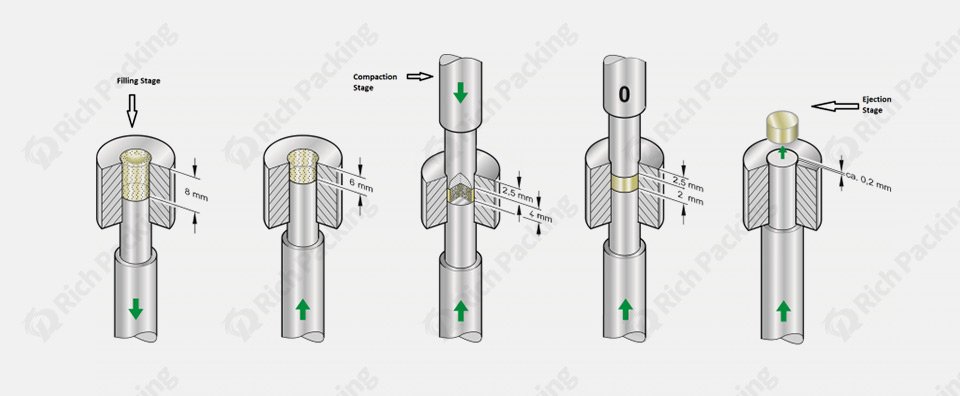
The key components of tablet press machines include the hopper, feeder system, die cavity, upper and lower punches, cam tracks, turret, ejection mechanism, and control system. Each component plays a vital role in ensuring the efficient and consistent production of high-quality tablets. Understanding these components and their functions is essential for optimizing tablet manufacturing processes:
1. Hopper
The hopper is the starting point of the tablet press machine. It holds the raw powder or granules and feeds them into the machine. The hopper is designed to ensure a consistent and controlled flow of material into the feeder system, preventing blockages and ensuring uniformity in tablet production.
2. Feeder System
The feeder system transfers the material from the hopper to the die cavity. It typically consists of paddles or a rotating mechanism that evenly distributes the material into the dies. The feeder system ensures that each die cavity receives the correct amount of material, which is essential for producing tablets of uniform weight and density.
3. Die Cavity
The die cavity is a hollow space within the die table where the tablet formation occurs. The size and shape of the die cavity determine the size and shape of the final tablet. Accurate filling of the die cavity is crucial for maintaining tablet uniformity and quality.
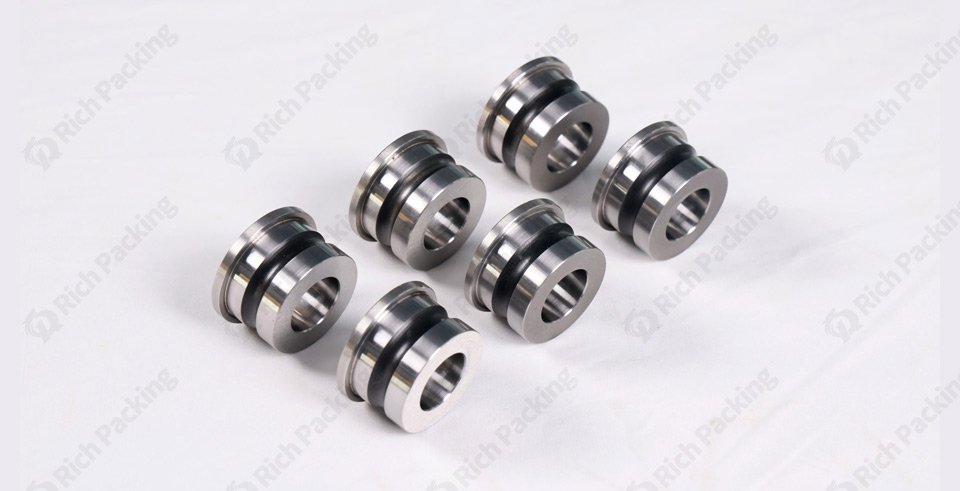
4. Upper and Lower Punches
The punches are the primary components responsible for compressing the material into tablets. There are two punches in a tablet press machine:
Upper Punch: Descends into the die cavity to apply pressure on the material.
Lower Punch: Supports the material from below and may also move slightly to assist in the compression process.
The punches must be precisely aligned and maintained to ensure consistent tablet quality and prevent machine wear.
5. Cam Tracks
Cam tracks guide the movement of the upper and lower punches. They control the punches' vertical motion, ensuring that they move in a synchronized manner. The cam tracks are designed to provide the correct amount of pressure and timing for each stage of the tablet formation process.
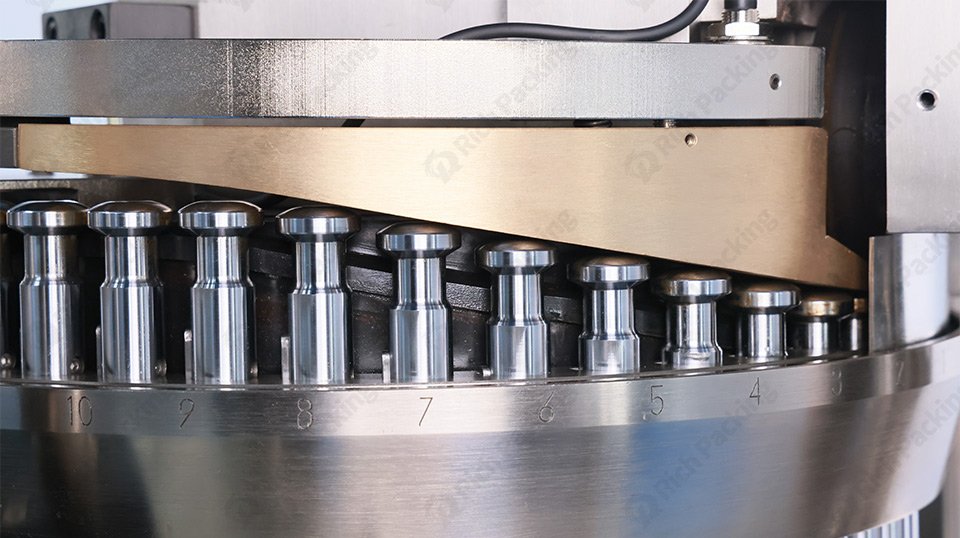
6. Turret or Rotary Table
The turret, or rotary table, holds multiple sets of dies and punches. It rotates to bring each die cavity and its corresponding punches into position for filling, compression, and ejection. The continuous rotation of the turret allows for high-speed tablet production.
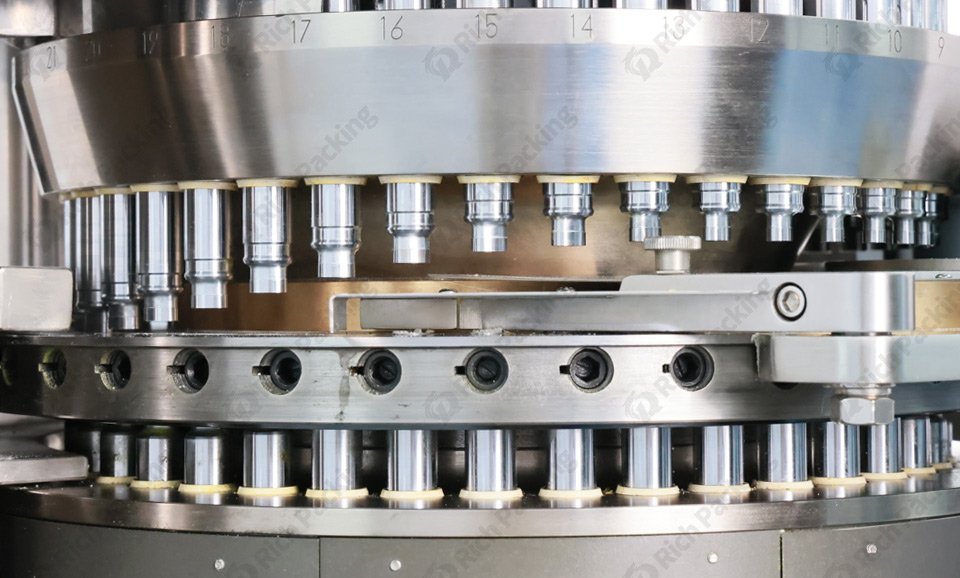
7. Ejection Mechanism
The ejection mechanism is responsible for removing the formed tablets from the die cavity. After compression, the upper punch retracts, and the lower punch rises to push the tablet out of the die. The ejected tablet is then directed to a discharge chute, where it is collected for further processing or packaging.
8. Control System
Modern tablet press machines are equipped with advanced control systems that monitor and adjust various parameters such as compression force, tablet thickness, and production speed. These systems ensure that each tablet meets the required specifications and quality standards. They also provide real-time data and feedback, allowing operators to make necessary adjustments quickly.
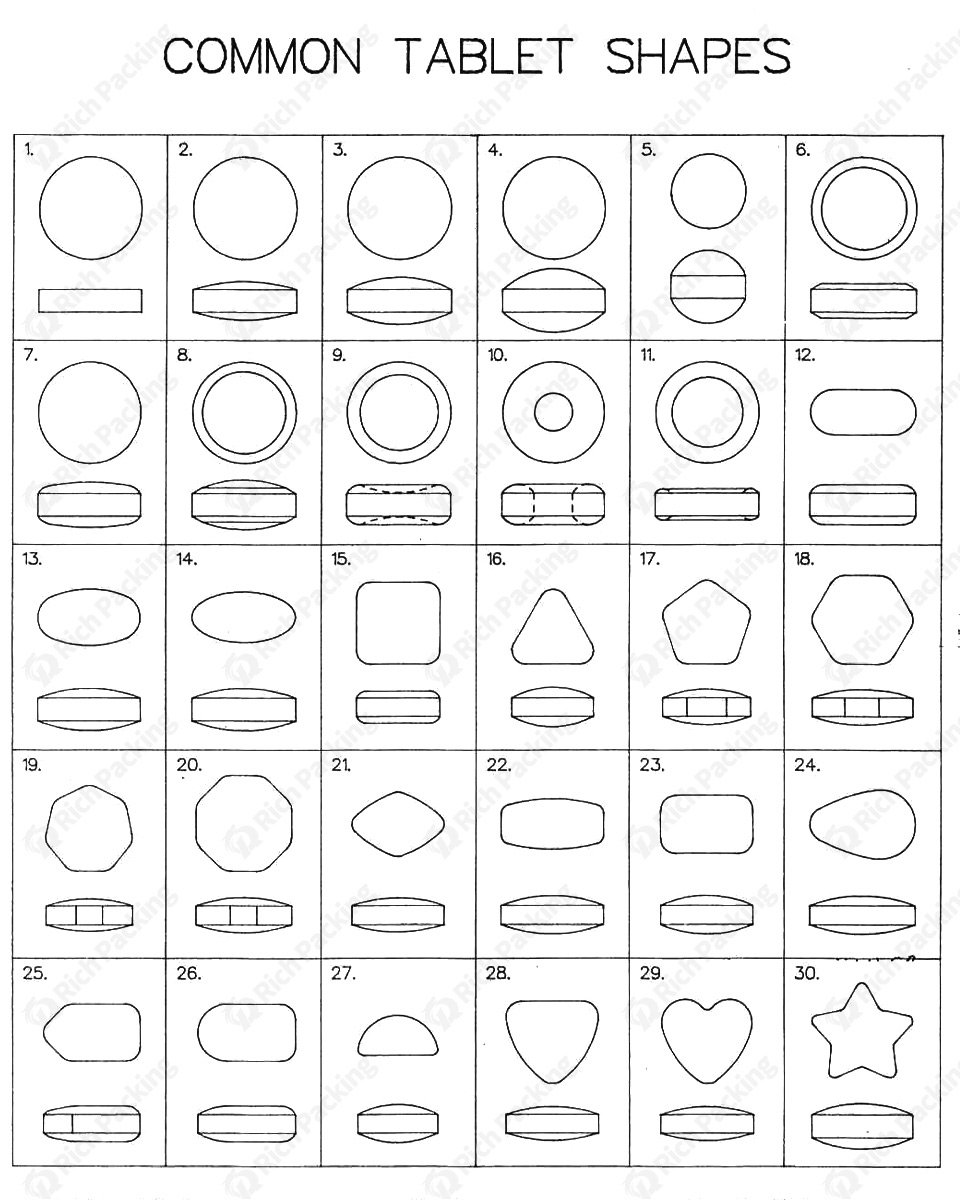
Tablet press machines are used in various industries for different applications:
1. Pharmaceutical Industry: Tablet presses are primarily used to produce medicinal tablets, including vitamins, antibiotics, and pain relievers. They ensure precise dosage and consistent quality, which are critical for patient safety and efficacy.
2. Nutraceutical Industry: Nutraceutical companies use tablet presses to manufacture dietary supplements, such as multivitamins, minerals, and herbal extracts. These tablets are designed to provide health benefits and are often marketed as over-the-counter products.
3. Food Industry: In the food industry, tablet presses are used to produce compressed food products, such as effervescent tablets, bouillon cubes, and confectionery items. These products are designed for convenience and ease of use.
4. Chemical Industry: Tablet presses are used to produce various chemical tablets, including cleaning agents, fertilizers, and pesticides. These tablets are designed for controlled release and precise application.
5. Cosmetics Industry: In the cosmetics industry, tablet presses are used to produce compact powders, blushes, and other pressed makeup products. These products are designed for ease of application and portability.
Tablet press machines are vital equipment in the pharmaceutical, nutraceutical, food, chemical, and cosmetics industries. They have evolved significantly over the years, from simple manual presses to sophisticated, automated machines capable of high-speed, large-scale production. With advancements in technology, tablet press machines continue to improve in terms of efficiency, precision, and versatility, meeting the diverse needs of various industries. As the demand for high-quality tablets continues to grow, tablet press machines will remain at the forefront of tablet manufacturing, driving innovation and excellence in the production process.
We are a manufacturer that has long supplied pharmaceutical and packaging machinery to Fortune 500 companies. If you happen to have the need to purchase a Tablet Press Machines, please contact us.